1/12scale Fulldetail Kit : 2J
●本製品は、2024年7月下旬発売予定です。ご予約をご希望のお客様は、下記のメールフォームにてご連絡をお願いいたします。
●ご予約数が一定数を超えた場合、初回生産分が発売前にご予約で完売になる場合がございます。その場合、次回生産までお待ちいただくことになります。この点、ご了承願います。
ご予約はこちらへ。
- this product is scheduled to be release in late July 2024. To place a pre-order please use the link below to contact us using the mail form.
- if pre-orders reach a certain number this product may become out of stock before release as only a limited number will be made during the initial run. Any other pre-orders following will be covered during the next production run. We will stop taking pre-orders/orders completely should the order numbers surpass the maximum production amount.
For pre-preorders, please contact us here
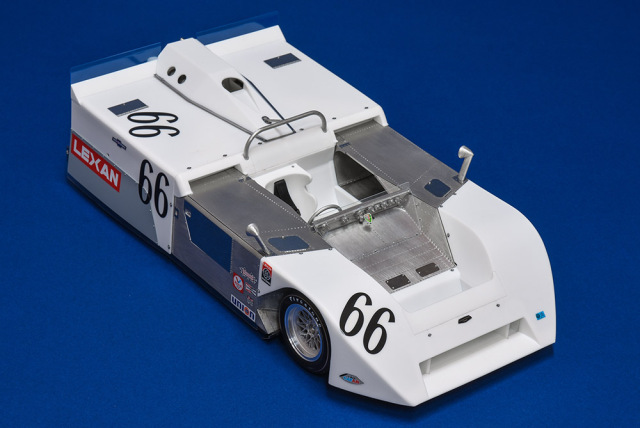
2024年7月発売予定 July 2024
Price : \95,000- (+tax)
[ 2J について -About the 2J - ]
Jim Hall (ジム・ホール) ― 1960年代から70年代にかけてのレースシーンにおいて、数々の技術的トライによってレーシングカーの進化に大きな足跡を残した、エンジニア兼レーシングドライバー、そして偉大な革新者です。
アメリカ・テキサス出身のHallは、60年代初頭にF1に参戦するほどのレーシングドライバーでしたが、同時に自らのオリジナルレースカーの製造を目指し、"Chaparral Cars"を設立します。テキサス州ミッドランドに作られたファクトリーには、“ラトルスネーク(ガラガラヘビ)”と呼ばれたテストコースも併設されていました。
そのファクトリーから、1963年にHall自ら設計に関与した最初のマシン、"2A"を完成させます。2Aはモノコックにレーシングカーでは殆ど使われてこなかったFRPを採用、80年代にカーボンが主流となる非金属モノコックの先駆けとなりました。Chaparral Carsの代名詞となる純白にペイントされたボディの2Aは、65年セブリング12時間レースにおいてフェラーリやフォードといった強豪を抑えてHallのドライブによる優勝という快挙を成し遂げます。
その後もHallとChaparral Carsは、油圧式可動ウィングを装備した"2C"、グループ6用に2Aを改造してニュルブルクリンク1000kmを制した"2D"、ハイマウントウィングを備えた"2E"・"2F"といったイノベイティブなマシンを次々と生み出しました。
1968年からはヨーロッパでのレギュレーション変更により、Hallはアメリカでのレース、Can-Am(Canadian-American Challenge Cup)レースに力を入れるようになります。69年には後のウイングカーの先駆けと言えなくもない"ボディ全体がウイング"構造の"2H"を投入しますが、望ましい成績をあげることはできませんでした。
そして1970年にHallは更なる新型マシンを開発し、Can-Amレースに投入します。それがChaparral Carsの中で最もイノベイティブなマシン、"2J"です。
2Jは、メインのV8 Big-Blockエンジンとは別に、スノーモービル用274ccエンジンを搭載、その動力で2基のファンを回転させ、四角いボディ内部の空気を吸い出すことで強いダウンフォースを発生させるという機構を持った"ファン・カー"でした。これは、F1においてブラバムBT46Bがファン・カーとしてサーキットに登場する8年前のことでした。
2Jは70年のCan-Amにおいて、一発の速さを見せ、いくつかのレース予選でポールポジションを獲得しそのポテンシャルを証明しました。しかし決勝レースではマイナートラブルが頻発し、期待された活躍を見せることはできませんでした。
翌年以降、さらなる熟成が期待された2Jでしたが、どちらかと言えば緩めのCan-Amレギュレーションに対し、FIA(国際自動車連盟)から待ったがかかり、71年からこのマシンの機構は禁止されてしまいます。このことにより、HallはCan-Amからの一時撤退を決断します。
HallとChaparral Carsの、先進の頂を目指しレース界の巨人達に伍して鎬を削り自由に闘い合えた日々は、一旦終焉を迎えることになりました。
成績的に2Jは"失敗作"の烙印を押される類のレーシングマシンに分類されるかもしれません。しかし、新しい可能性を追い求めたJim Hallの情熱が結実したChaparral Carsのマシン達の輝きは、今なお色褪せることなくレース史に残り続けることでしょう。
Jim Hall was an engineer and racing driver who bought many new innovations to the racing scene during the 1960s and 1970s aiding in the evolution of the sport. Born in Texas, US, Hall competed in Formula One as a driver in the early 1960s, and also founded Chaparral Cars with the goal of building his own original race cars around the same time. The factory, located in Midland, Texas, included a test track called the “Rattlesnake”.
It was here that Hall designed and built his first car in 1963 - the 2A. It featured a monocoque made of FRP, which was innovative at the time as non-metals were not used for monocoques until the 1980s where carbon fibre would become mainstream. The 2A, with its white painted body that became synonymous with Chaparral Cars, won the 12 Hours of Sebring in 1965 with Hall driving it to victory over powerhouses such as Ferrari and Ford.
Hall and Chaparral Cars went on to create a series of innovative cars: the “2C” featuring a hydraulic moving wing, the “2D” which was a 2A modified for Group 6 that won the 1000 km Nürburgring, the “2E” with a high-mounted wing, and the “2F”. Due to racing regulation changes in Europe in 1968, Hall would switch his focus to Can-Am racing in the U.S. instead. In 1969, Hall introduced the “2H,” - designed in such that the entire car acted as a giant wing, which could be said to be the forerunner of later winged cars. Despite the novelty, the car did not perform well.
Hall then developed an even more innovative machine for the season of 1970 - the “2J”. Apart from the main V8 big-block engine, the 2J was powered by a 274cc snowmobile engine, which rotated two fans that sucked air out of the square body to generate strong downforce – a similar concept done by the Brabham BT46B F1 car 8 years later. The 2J showed potential during the 1970 Can-Am season by taking pole position in several qualifying sessions, however it failed to leave a mark as minor issues occurred frequently during the main race that lead to it's retirement. The 2J would only race during this season, as revised regulations for Can-Am in the following season banned the use of the machine from 1971 and on.This prompted Hall's decision to temporarily withdraw from Can-Am.
This marked an end to Hall and Chaparral Cars' journey to the top of the racing world. In terms of performance the 2J may have been a failure, but it reflected the brilliance of Chaparral Cars' machines and J.Hall's passion to pursue new possibilities, which will never fade away and remain an important part in racing history.
[ キット概要 -Kit Details- ]
■1970年Can-Am第9戦、ラグナセカに参戦した、Vic Elfordドライブの2Jを1/12スケールでモデル化しました。
■ホワイトメタル、ウレタン樹脂、金属挽き物、エッチングパーツ、ゴムタイヤ、デカール、各種コード類を使用したマルチ・マテリアル・キット。
■ホイールリム・マフラーエンド・コクピットメーターの各パーツは金属挽き物製で質感高く再現できます。
■ドアは開閉が可能、フロントカウル・リアカウルは取り外しが可能で完成後も内部構造を見ることができます。
■デカールはカルトグラフ製。
- based on Car #66 driven by Vic Elford during Rd.9 of the 1970 Can-Am season (at Laguna Seca Raceway)
- a fully detailed, multi-material kit featuring white metal, resin, etching, turned parts, rubber tires, silk screen decals and various cords allowing for maximum representation of the original vehicle.
- aluminum turned parts used for wheel rim, muffler end, and cockpit meters.
- doors can be open and closed, and front cowl & rear cowl can be removed post construction allowing for view of the detailed interior after completion.
- decals printed by Cartograf.
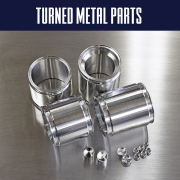
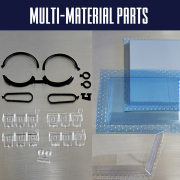
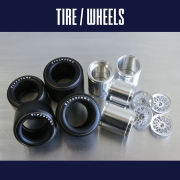
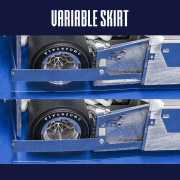
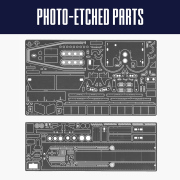
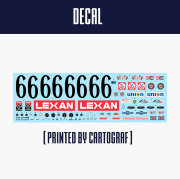
[ パーツ・リスト -Parts List- ]
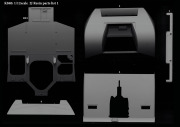
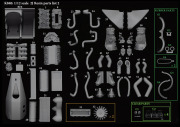
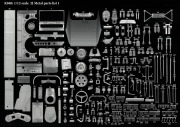
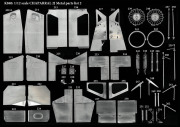
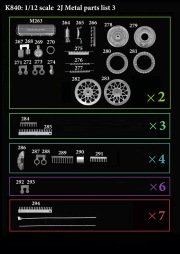
●K840 - 1/12scale Fulldetail Kit : 2J
1970 Can-Am Rd.9 Laguna Seca #66 Vic Elford
*(現在企画中ですので、発売時期・価格・仕様・構成が変更になる場合があります。 / CG画像はイメージです。必ずしもキット内容と合致するとは限りません。)
*(Product is currently still in design phase: release date/price/instructions for construction/build may be altered for official release. / Images based off CG captures may not accurately reflect that of the final product.)
[ 2024年7月発売 / July 2024 released ]

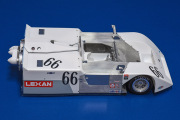
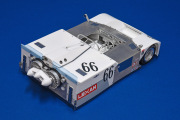
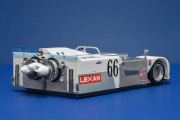
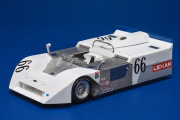
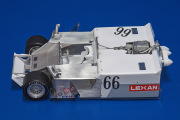
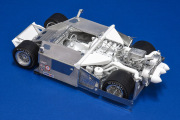
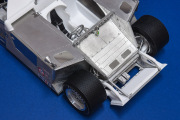
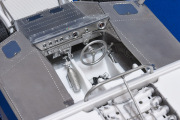
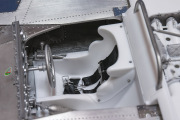
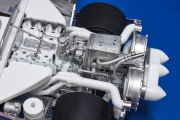
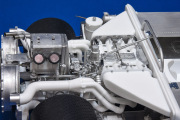
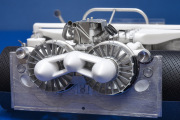
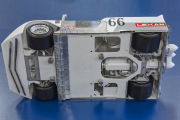
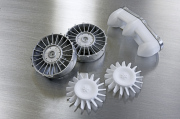
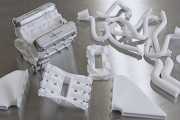
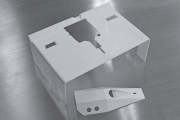
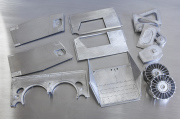
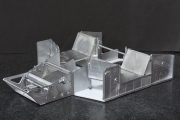
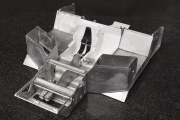
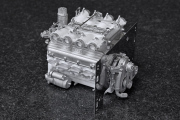
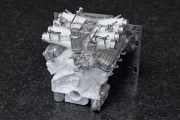
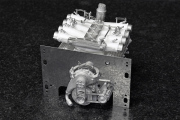
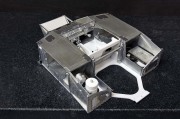
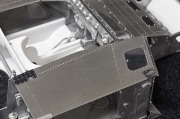
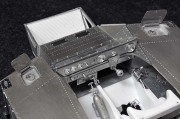
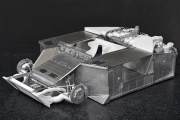
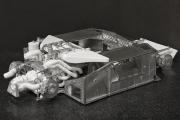
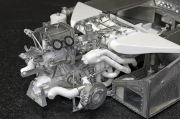
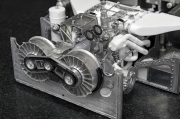
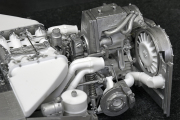
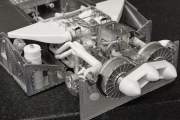
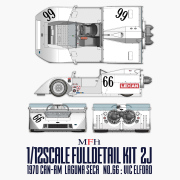
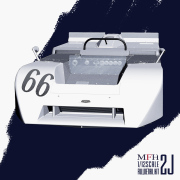
●ご予約数が一定数を超えた場合、初回生産分が発売前にご予約で完売になる場合がございます。その場合、次回生産までお待ちいただくことになります。この点、ご了承願います。
ご予約はこちらへ。
- this product is scheduled to be release in late July 2024. To place a pre-order please use the link below to contact us using the mail form.
- if pre-orders reach a certain number this product may become out of stock before release as only a limited number will be made during the initial run. Any other pre-orders following will be covered during the next production run. We will stop taking pre-orders/orders completely should the order numbers surpass the maximum production amount.
For pre-preorders, please contact us here

2024年7月発売予定 July 2024
Price : \95,000- (+tax)
[ 2J について -About the 2J - ]
Jim Hall (ジム・ホール) ― 1960年代から70年代にかけてのレースシーンにおいて、数々の技術的トライによってレーシングカーの進化に大きな足跡を残した、エンジニア兼レーシングドライバー、そして偉大な革新者です。
アメリカ・テキサス出身のHallは、60年代初頭にF1に参戦するほどのレーシングドライバーでしたが、同時に自らのオリジナルレースカーの製造を目指し、"Chaparral Cars"を設立します。テキサス州ミッドランドに作られたファクトリーには、“ラトルスネーク(ガラガラヘビ)”と呼ばれたテストコースも併設されていました。
そのファクトリーから、1963年にHall自ら設計に関与した最初のマシン、"2A"を完成させます。2Aはモノコックにレーシングカーでは殆ど使われてこなかったFRPを採用、80年代にカーボンが主流となる非金属モノコックの先駆けとなりました。Chaparral Carsの代名詞となる純白にペイントされたボディの2Aは、65年セブリング12時間レースにおいてフェラーリやフォードといった強豪を抑えてHallのドライブによる優勝という快挙を成し遂げます。
その後もHallとChaparral Carsは、油圧式可動ウィングを装備した"2C"、グループ6用に2Aを改造してニュルブルクリンク1000kmを制した"2D"、ハイマウントウィングを備えた"2E"・"2F"といったイノベイティブなマシンを次々と生み出しました。
1968年からはヨーロッパでのレギュレーション変更により、Hallはアメリカでのレース、Can-Am(Canadian-American Challenge Cup)レースに力を入れるようになります。69年には後のウイングカーの先駆けと言えなくもない"ボディ全体がウイング"構造の"2H"を投入しますが、望ましい成績をあげることはできませんでした。
そして1970年にHallは更なる新型マシンを開発し、Can-Amレースに投入します。それがChaparral Carsの中で最もイノベイティブなマシン、"2J"です。
2Jは、メインのV8 Big-Blockエンジンとは別に、スノーモービル用274ccエンジンを搭載、その動力で2基のファンを回転させ、四角いボディ内部の空気を吸い出すことで強いダウンフォースを発生させるという機構を持った"ファン・カー"でした。これは、F1においてブラバムBT46Bがファン・カーとしてサーキットに登場する8年前のことでした。
2Jは70年のCan-Amにおいて、一発の速さを見せ、いくつかのレース予選でポールポジションを獲得しそのポテンシャルを証明しました。しかし決勝レースではマイナートラブルが頻発し、期待された活躍を見せることはできませんでした。
翌年以降、さらなる熟成が期待された2Jでしたが、どちらかと言えば緩めのCan-Amレギュレーションに対し、FIA(国際自動車連盟)から待ったがかかり、71年からこのマシンの機構は禁止されてしまいます。このことにより、HallはCan-Amからの一時撤退を決断します。
HallとChaparral Carsの、先進の頂を目指しレース界の巨人達に伍して鎬を削り自由に闘い合えた日々は、一旦終焉を迎えることになりました。
成績的に2Jは"失敗作"の烙印を押される類のレーシングマシンに分類されるかもしれません。しかし、新しい可能性を追い求めたJim Hallの情熱が結実したChaparral Carsのマシン達の輝きは、今なお色褪せることなくレース史に残り続けることでしょう。
Jim Hall was an engineer and racing driver who bought many new innovations to the racing scene during the 1960s and 1970s aiding in the evolution of the sport. Born in Texas, US, Hall competed in Formula One as a driver in the early 1960s, and also founded Chaparral Cars with the goal of building his own original race cars around the same time. The factory, located in Midland, Texas, included a test track called the “Rattlesnake”.
It was here that Hall designed and built his first car in 1963 - the 2A. It featured a monocoque made of FRP, which was innovative at the time as non-metals were not used for monocoques until the 1980s where carbon fibre would become mainstream. The 2A, with its white painted body that became synonymous with Chaparral Cars, won the 12 Hours of Sebring in 1965 with Hall driving it to victory over powerhouses such as Ferrari and Ford.
Hall and Chaparral Cars went on to create a series of innovative cars: the “2C” featuring a hydraulic moving wing, the “2D” which was a 2A modified for Group 6 that won the 1000 km Nürburgring, the “2E” with a high-mounted wing, and the “2F”. Due to racing regulation changes in Europe in 1968, Hall would switch his focus to Can-Am racing in the U.S. instead. In 1969, Hall introduced the “2H,” - designed in such that the entire car acted as a giant wing, which could be said to be the forerunner of later winged cars. Despite the novelty, the car did not perform well.
Hall then developed an even more innovative machine for the season of 1970 - the “2J”. Apart from the main V8 big-block engine, the 2J was powered by a 274cc snowmobile engine, which rotated two fans that sucked air out of the square body to generate strong downforce – a similar concept done by the Brabham BT46B F1 car 8 years later. The 2J showed potential during the 1970 Can-Am season by taking pole position in several qualifying sessions, however it failed to leave a mark as minor issues occurred frequently during the main race that lead to it's retirement. The 2J would only race during this season, as revised regulations for Can-Am in the following season banned the use of the machine from 1971 and on.This prompted Hall's decision to temporarily withdraw from Can-Am.
This marked an end to Hall and Chaparral Cars' journey to the top of the racing world. In terms of performance the 2J may have been a failure, but it reflected the brilliance of Chaparral Cars' machines and J.Hall's passion to pursue new possibilities, which will never fade away and remain an important part in racing history.
[ キット概要 -Kit Details- ]
■1970年Can-Am第9戦、ラグナセカに参戦した、Vic Elfordドライブの2Jを1/12スケールでモデル化しました。
■ホワイトメタル、ウレタン樹脂、金属挽き物、エッチングパーツ、ゴムタイヤ、デカール、各種コード類を使用したマルチ・マテリアル・キット。
■ホイールリム・マフラーエンド・コクピットメーターの各パーツは金属挽き物製で質感高く再現できます。
■ドアは開閉が可能、フロントカウル・リアカウルは取り外しが可能で完成後も内部構造を見ることができます。
■デカールはカルトグラフ製。
- based on Car #66 driven by Vic Elford during Rd.9 of the 1970 Can-Am season (at Laguna Seca Raceway)
- a fully detailed, multi-material kit featuring white metal, resin, etching, turned parts, rubber tires, silk screen decals and various cords allowing for maximum representation of the original vehicle.
- aluminum turned parts used for wheel rim, muffler end, and cockpit meters.
- doors can be open and closed, and front cowl & rear cowl can be removed post construction allowing for view of the detailed interior after completion.
- decals printed by Cartograf.






[ パーツ・リスト -Parts List- ]





●K840 - 1/12scale Fulldetail Kit : 2J
1970 Can-Am Rd.9 Laguna Seca #66 Vic Elford
*(現在企画中ですので、発売時期・価格・仕様・構成が変更になる場合があります。 / CG画像はイメージです。必ずしもキット内容と合致するとは限りません。)
*(Product is currently still in design phase: release date/price/instructions for construction/build may be altered for official release. / Images based off CG captures may not accurately reflect that of the final product.)
[ 2024年7月発売 / July 2024 released ]





































